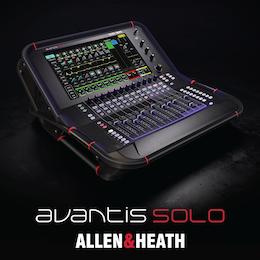Subscribe to CX E-News
This week CX saw the new Yamaha CL console at the Sydney launch. A cold grey morning gave way to some lunchtime showers, but the view up the harbour from the Utzon Room at the Sydney Opera House was sanguine.
Jason Allen from Yamaha knows his product inside out, but we were first struck by the industrial design. Where the M7CL, launched 7 years ago, was utilitarian and looked unfinished, with its Pod that didn’t fold flat, panel screws and blank spaces on the facia, the new CL is a thing of beauty. M7CL was like a Ford Falcon – the new CL is more BMW.
And the new system, with remote racks and way more capability costs considerably less in 2012 dollars than the 2005 M7CL.
So there is the new reality for live technical production, a complex and risky niche industry where most of us are there for the vibe, not the money. Almost all of us relish the end result, when an audience go home happy. There are no corporate jets in this side of the biz, unless you are Prince’s concert director employed on a 24 hour notice contract.
Look at how projectors have come down in price, while the lumen output and resolution have multiplied. Video walls. Moving lights, Control desks, and the $70 yumcha Par 56 can with lamp, gels and hook.
Peter Troy told a seminar that CX hosted last year of his Troy Balance Corporation days, when a JBL diaphragm for his Meyer MSL3 (yes, JBL supplied the compression drivers) cost three hundred 1985 dollars. That would be $1,200 dollars today – and he had an American tour act whose engineer boasted before a gig at Selina’s that he was ‘gonna blow up all this PA….’
Jands made their own desks, parametric EQs, crossovers, amps, speaker boxes – almost EVERYTHING in the 70’s and 80’s because we had punishing tariff taxes on imports.
My friend Greg Kean at Lots of Watts bought a Soundcraft Series Five concert console in the 1990’s for the same price as a suburban Sydney house! He is still trying to sell it – I think it will be in this month’s sale at around 5 grand.
Noel Lightfoot’s equipment was sold at auction by the liquidator last month for a shade over 100 grand. There is so much band for your buck these days that in theory, doing live production should be a wildly profitable experience.
Back in the 80’s anything I could buy I could hire and get a good return for. Capital was really, really tight – I managed to leverage banks and leasing firms all the way into the late 1980’s credit squeeze when I found myself paying 22% interest on my loans. Seeing the writing on the wall, I extracted myself from Graftons Sound and Lighting, and from Australian Monitor (my first $1 million loss) and managed to cash up everything. I put the bucks into a family trust, and bought a farm.
Starting the magazine empire in 1990 (thanks to Jands with Channels Magazine, and thanks to Federal Publishing whose Sonics magazine was edited by the guy on secondment from Fishing Monthly) I quickly realised the underlying business of production was changing quickly.
We went from ground support stacked everything to composite flown, and the production values were rising fast. Prices kept rising too, until Mackie and a few others showed what you can do with smart manufacturing. Behringer reset the rule book with early success from Asian built and German designed product, amidst a slew of law suits from Mackie and others who claimed design infringements.
Rare earth magnets quickly made older loudspeaker designs obsolete – if a box weighed more than 100kg it was very hard to sell. Now we have speaker boxes that handle ten times the power, but weigh four times less, and cost half as much in today’s dollars against a product sold ten years ago.
But there is such an over-supply of brands, in a falling value market, with no barriers to entry. A production firm needs only a mobile phone number and an ABN to operate. We have no recognised qualifications, skill sets are exactly the same as in 1973, and hey – paying Super, GST and group tax is usually second to buying another piece of equipment.
Time and time again, CX sees the crunch point as being when a young production dude employs someone. About 12 months later, the tax, workers compensation and third party insurance is all a reality, and within 24 months many of these firms are really behind. By then, the prices they charge are UN-sustainable, and unless they are really adriot with ultra loyal customers, the business starts to downsize.
But we think the customers are waking up quickly, because show failures and poor production quality are a lot more obvious to audiences. The high-def, technicolour big screen experience with amazing fidelity from new generation speaker systems shows up older technology and amplifies mistakes. Clipping and distortion, missed cues and crappy pictures are now the subject of complaints, and CX has been outside a box office at an average show and heard punters demanding refunds for reasons relating to poor audio.
So, venture forth and be the best you can be!
Subscribe
Published monthly since 1991, our famous AV industry magazine is free for download or pay for print. Subscribers also receive CX News, our free weekly email with the latest industry news and jobs.











